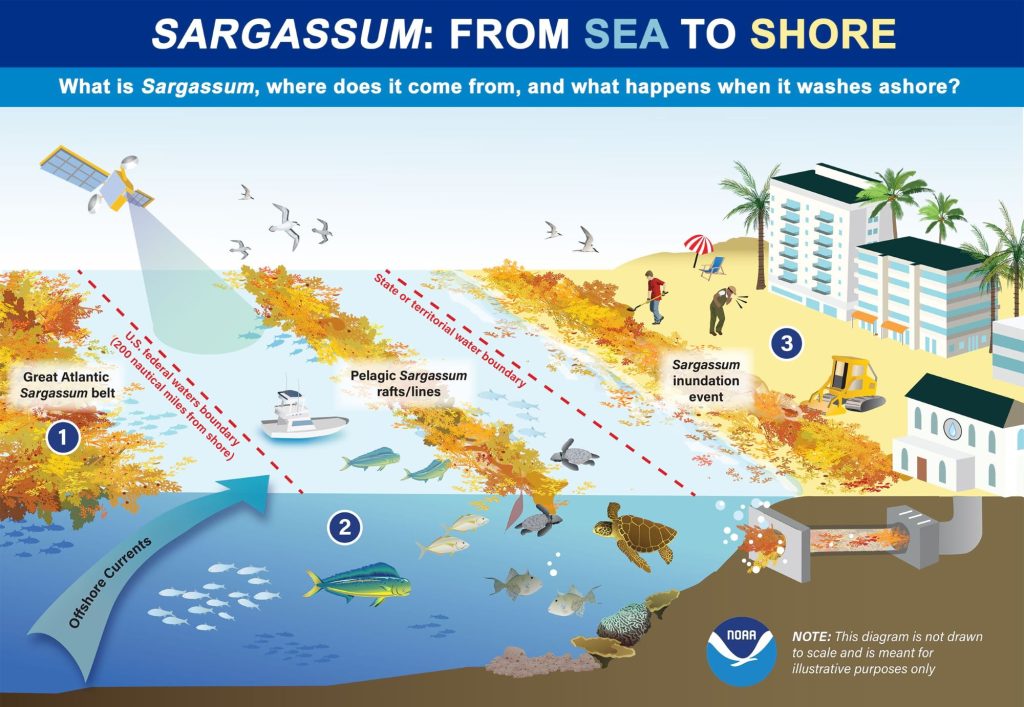How Belize is Managing the Global Sargassum Issue
Sargassum, a type of brown seaweed, has become increasingly noticeable along coastlines worldwide. Originating from the Sargasso Sea, this floating seaweed serves as a crucial habitat for marine life in open waters. However, changing ocean conditions, including rising temperatures and nutrient runoff, have led to larger-than-usual blooms that reach coastal areas, particularly in the Atlantic Ocean and the Caribbean Sea. While sargassum plays an important ecological role, its excessive presence along shorelines presents unique challenges and opportunities.
Understanding Sargassum in the Caribbean
The Caribbean, a region celebrated for its vibrant marine ecosystems and tourism appeal, has experienced seasonal influxes of sargassum. While managing these arrivals requires effort, they also present opportunities for sustainable solutions. Some key aspects of sargassum’s presence include:
• Natural Cycles and Climate Factors: The increase in sargassum is linked to natural oceanic cycles, climate change, and increased nutrients in the water, which encourage its growth.
• Marine Habitat Contribution: Sargassum provides shelter and food for various marine species while in open waters, supporting biodiversity before it reaches shorelines.
• Beach Maintenance Challenges: Excessive sargassum accumulation can be an inconvenience, particularly for coastal communities and tourism-related businesses, requiring consistent management efforts.

Belize’s Proactive Approach to Sargassum Management
Belize, known for its stunning beaches and rich marine biodiversity, has embraced innovative strategies to manage sargassum effectively and sustainably. The country is actively engaged in keeping its shores clean while exploring beneficial uses for collected seaweed. Key initiatives include:
• Beach Cleanup and Maintenance: Local communities, resorts, and municipalities collaborate to remove sargassum efficiently using both manual labor and specialized equipment.
• Floating Barriers and Collection Systems: Several coastal areas, including Ambergris Caye and Placencia, have installed floating barriers to intercept sargassum before it reaches the shore, reducing the impact on beaches.
• Sustainable Repurposing Efforts: Belize is exploring innovative ways to use collected sargassum, including transforming it into fertilizer, animal feed, and even eco-friendly construction materials.
• Collaborative Government and Private Sector Efforts: The Belizean government, local businesses, and international partners are working together to develop sustainable, long-term solutions.
• Community Engagement and Awareness: Public education campaigns inform residents and visitors about sargassum’s natural role, ongoing management efforts, and ways to contribute to maintaining clean beaches.
As Belize continues to refine its approach to sargassum management, the country remains committed to balancing environmental conservation with sustainable tourism. Through innovation and collaboration, sargassum is being turned from a challenge into an opportunity, ensuring that Belize’s coastal beauty and marine ecosystems thrive for years to come.

